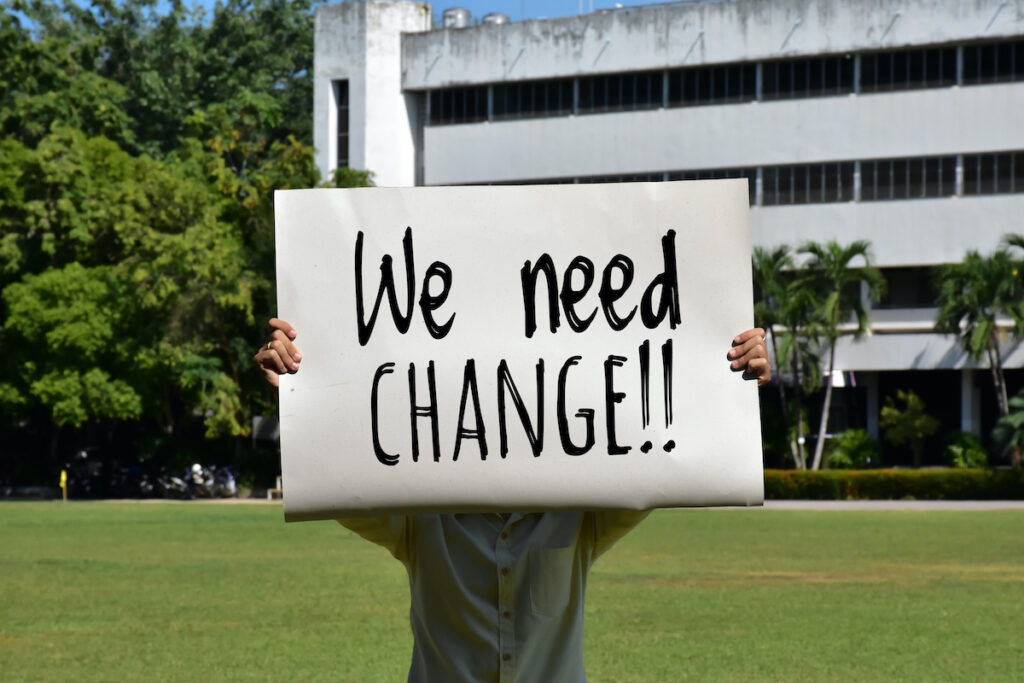
Mental health stigma has been perceived as cyclical, impacting on several levels: individuals, their families and friends, organisations and society (Hemming, 2018; Huggett et al., 2018; Wittchen et al., 2011). The general public often associate the label schizophrenia with dangerousness, incompetency and violence (Angermeyer MC. & Dietrich S., 2006). Such stigma is felt by 40% of people with lived experience of schizophrenia (Brohan et al., 2010) and impacts negatively on quality of life, help-seeking (Corrigan et al., 2014), self-esteem, mental health (Lysaker et al., 2008, 2009) and suicidal experiences (Sharaf et al., 2012).
The health care system, which includes mental health professionals, has been identified by people with schizophrenia as being a key source of stigmatisation (Mestdagh et al., 2014). To date, three reviews have examined mental health stigma generally in mental health professionals, all of which reported mixed attitudes towards people with mental health problems across included studies (De Jacq et al., 2016; Schulze, 2007; Wahl et al., 2010). For instance, mental health professionals shared misconceptions with the general public about people with mental health problem being dangerous, although they did endorse the idea that recovery is possible and people are able to marry and have children (Wahl et al., 2010).
There is a wealth of evidence to suggest that the general population hold the most negative attitudes and desire to socially distance themselves from those with the label of schizophrenia (Durand-Zaleski et al., 2012; Sadler et al., 2012). Similarly, there is some evidence to suggest that mental health professionals hold different levels of stigmatising beliefs toward different mental health problems.
So in this context, Valery & Prouteau (2020) have highlighted a need to further explore the stigmatisation of such mental health problems and aimed in their systematic review to:
- identify the specific characteristics which influence the stigmatising views of mental health professionals toward people with schizophrenia;
- compare such stigmatising views toward people with schizophrenia and other mental health problems;
- compare stigmatising views by mental health professionals to other ‘social groups’.

Stigma associated with the label of schizophrenia is detrimental to people’s quality of life, help-seeking, self-esteem, mental health and suicidal experiences.
Methods
The authors searched for studies which met four key criteria:
- Written in English and published within a peer-reviewed journal;
- Quantitative study which reported statistical analysis;
- Assessing stigma related to the label of schizophrenia, people with schizophrenia or the type of mental health support they receive;
- Studies with samples comprising of mental health professionals only.
Four areas were examined for risk of bias:
- Sample size;
- Social desirability;
- Standardised data collection for comparison groups;
- Measurement effect.
Results
Thirty-eight studies were included in the systematic review.
Stigma by mental health professionals, attached to the label of schizophrenia, compared to other mental health problems
- A diagnosis of schizophrenia was viewed more negatively, including, having a worse prognosis and more desire for social distance than depression.
- The label borderline personality disorder was related to more negative beliefs, including dangerousness and desire to social distance, than the label schizophrenia.
- Substance abuse was related to more negative beliefs that schizophrenia. However, a dual diagnosis of substance abuse and schizophrenia, generated more negative beliefs specifically in psychiatrist, than if a person had only one of these diagnoses.
Stigma by mental health professionals compared to other populations
- Compared to the general population, mental health professionals perceived less dangerousness. However, there were inconclusive results for social distancing and beliefs about prognosis. Furthermore, mental health professionals held more positive beliefs about pharmacological treatments and resonated more with the biological model for schizophrenia, than the general population.
- Psychologists and mental health nurses held less negative beliefs than general practitioners (GPs). However, the studies comparing the beliefs of psychiatrists and GPs produced mixed findings.
- Mental health professionals held a more holistic view of the cause of schizophrenia (despite favouring the biological model), viewed less dangerousness, more positive beliefs about medication and psychotherapy than people with a diagnosis of schizophrenia. There were no differences regarding desire to social distance.
- Mental health professionals held less negative beliefs, expressed more positivity about social functioning and perceived people with schizophrenia to be less dangerous, than relatives of people with the label schizophrenia.
Factors linked to stigma in mental health professionals toward people with schizophrenia
- There were inconclusive results regarding the relationship between age, length of practice and level of education, and stigmatising views. However, there was evidence to suggest that gender had no impact on stigma in mental health professionals.
- Nine studies reported differences in stereotyping beliefs between psychiatrists, psychologists and mental health nurses. However, the results were inconsistent. Psychiatrists had less faith in psychotherapies than other mental health professionals. Furthermore, nurses who worked in a community setting held less stigmatising views than nurses working in an acute psychiatric ward setting.
- Mental health professionals who favoured the biological model for the cause of schizophrenia held more negative attitudes, including dehumanising those with schizophrenia and being less empathic.
- Practitioners with lived experience of mental health problems had less desire to social distance and had more positive views about the competency of people with schizophrenia.

Practitioners with lived experience of mental health problems had less desire to social distance and had more positive views about the competency of people with schizophrenia.
Conclusions
Overall, this review established that schizophrenia is one of the most stigmatised mental health problems by mental health professionals. Moreover, the general public and GPs hold more stigmatising beliefs of schizophrenia than mental health professionals. Lastly, work setting or context and beliefs about the cause of schizophrenia impact on the stigmatising views of mental health professionals.

How can we reduce stigma by mental health professionals toward people with schizophrenia?
Strengths and limitations
The authors should be commended on their systematic approach to review the existing literature on the important issue of stigma by mental health professionals towards people with schizophrenia. However, the database search strategy was limited to only three databases, English language, and peer-reviewed articles published in a journal, which calls into question whether all of the available evidence was collated. Furthermore, there were no details provided on reliability checks performed for the selection of studies or assessment of risk of bias. This is a source of potential bias in the selection and quality assessment process, which would be minimised with a reliability check from a second reviewer.
A specific risk of bias tool was not used to assess the quality of included studies. Instead, four criteria were used that had been extracted from two different papers and no justification was given for assessing study quality in this way. Furthermore, the studies included in the review varied in quality, but it would have been helpful if the reviewers had discussed and provided a summary on this variation in the main text.
A variety of measures were used to assess the different components of stigma, with a heavy focus on measures capturing beliefs and a limited number of studies measuring stigmatising attitudes and behaviour. The reviewers also found that studies infrequently outlined a theoretical model to define stigma and the equivalent measure. Consequently, the study researchers lacked clarity in their understanding of distinctions between the different components of stigma, i.e. stereotype and prejudice or belief and attitude. Therefore, to avoid such confusion, future studies should include theory to define stigma and stigma related measures.

The reviewers identified an apparent confusion amongst study authors between different components of stigma, such as belief and attitude. To avoid such confusion, researchers should ensure they use theory to define stigma and stigma measures.
Implications for practice
The authors found that belief in the biological model for the origins of schizophrenia led to more negative perceptions of people with schizophrenia. Furthermore, the reviewers recommended that mental health professionals should be trained to highlight the link between such beliefs and stigma, along with psychological and social explanations for schizophrenia (Varese et al., 2012). However, throughout the manuscript, the authors also used more medicalised terminology to describe psychosis and mental health problems, using terms such as “mental illness”. This suggests that the authors could be unknowingly perpetuating the stigma that they would like to eradicate. Therefore, researchers and clinicians should firstly be given training to gain an understanding of different, trauma-informed, explanations for the origins of psychosis so that the biological model is not the main narrative. An example would be the Power Threat Meaning Framework (Johnstone et al, 2018), which was developed by the British Psychological Society in recent years. Secondly, be mindful of the language used to describe mental health problems to ensure that it does not accidentally perpetuate stigma attached to mental health problems such as psychosis. Although, it should be acknowledged that some people with lived experience of mental health problems refer to their experience as an illness and find the biological model and diagnostic label as helpful in understanding their experiences. This may be a tricky balance for mental health professionals to maintain, as they may be torn between using inclusive, non-stigmatising/non-medical language and building a therapeutic alliance with the person with mental health problems.
From listening to the powerful stories of people with lived experience of mental health stigma, it is evident that stigma from mental health professionals and the systems that are set up to provide help and support can have a profound, detrimental impact on people with mental health problems. In order to eradicate stigmatising views of mental health professionals, we need to not only provide training, but challenge the wider systems that mental health professionals sit in. This is because a lack of funding, being over-worked and restrictive policies may impact on burnout for mental health professionals, making them more susceptible to stigmatising beliefs (Henderson et al., 2014). This means that mental health professionals may unintentionally stigmatise by dehumanising people with mental health problems to protect themselves from further burnout and emotional exhaustion (Pavon and Vaes, 2017). Therefore, to help prevent issues of staff burnout and mental health stigma, mental health services need to be adequately funded and staffed.

Could properly funded mental health systems help to eradicate mental health stigma?
Statement of interests
None.
Links
Primary paper
Valery KM & Prouteau A (2020) Schizophrenia stigma in mental health professionals and associated factors: a systematic review. Psychiatry Research [pre-print]. [Pubmed Abstract]
Other references
Angermeyer MC, & Dietrich S. (2006) Public beliefs about and attitudes towards people with mental illness: a review of population studies. Acta Psychiatrica Scandinavica 2006 113 163–179. [Pubmed Abstract]
Brohan E, Elgie R, Sartorius N. et al (2010) Self-stigma, empowerment and perceived discrimination among people with schizophrenia in 14 European countries: The GAMIAN-Europe study. Schizophrenia Research 2010 122 232–238. [Pubmed Abstract]
Corrigan PW, Druss BG, & Perlick DA. (2014) The Impact of Mental Illness Stigma on Seeking and Participating in Mental Health Care. Psychological Science in the Public Interest 2014 15 37–70. [Pubmed Abstract]
de Jacq K, Norful AA, & Larson E. (2016) The variability of nursing attitudes toward mental illness: An integrative review. Archives of Psychiatric Nursing 2016 30 788–796. [Pubmed Abstract]
Durand-Zaleski I, Scott J, Rouillon F, et al (2012) A first national survey of knowledge, attitudes and behaviours towards schizophrenia, bipolar disorders and autism in France (PDF). BMC Psychiatry 2012 12 128.
Hemming L. A hierarchy of stigma based on mental health diagnosis? The Mental Elf, 5 Apr 2018.
Henderson C, Noblett J, Parke H, et al (2014) Mental health-related stigma in health care and mental health-care settings (PDF). The Lancet Psychiatry 2014 1(6) 467-482.
Huggett C, Birtel MD, Awenat YF, et al (2018) A qualitative study: experiences of stigma by people with mental health problems (PDF). Psychology and Psychotherapy: Theory, research and practice 2018 91(3) 380-397.
Johnstone L, & Boyle M, with Cromby J, et al (2018) The Power Threat Meaning Framework: Towards the identification of patterns in emotional distress, unusual experiences and troubled or troubling behaviour, as an alternative to functional psychiatric diagnosis (PDF). Leicester: British Psychological Society
Lysaker PH, Tsai J, Yanos P, et al (2008) Associations of multiple domains of self-esteem with four dimensions of stigma in schizophrenia. Schizophrenia Research 2008 98 194–200. [Pubmed Abstract]
Lysaker PH, Vohs JL, Tsai J. (2009) Negative symptoms and concordant impairments in attention in schizophrenia: Associations with social functioning, hope, self-esteem and internalized stigma. Schizophrenia Research 2009 110 165–172. [Pubmed Abstract]
Mestdagh A, & Hansen B. (2014) Stigma in patients with schizophrenia receiving community mental health care: A review of qualitative studies (PDF). Social Psychiatry and Psychiatric Epidemiology 2014 49 79–87.
Pavon G, & Vaes J. (2017) Bio-genetic vs psycho-environmental conceptions of schizophrenia and their role in perceiving patients in human terms. Psychosis Psychological, Social and Integrative Approaches 2017 9 245–253. [Abstract]
Sadler MS, Meagor EL, & Kaye KE. (2012) Stereotypes of mental disorders differ in competence and warmth (PDF). Social Science & Medicine 2012 74 915–922.
Schulze B. (2007) Stigma and mental health professionals: A review of the evidence on an intricate relationship. International Review of Psychiatry 2007 19 137–155. [Pubmed Abstract]
Sharaf AY, Ossman LH, & Lachine OA. (2012) A cross-sectional study of the relationships between illness insight, internalized stigma, and suicide risk in individuals with schizophrenia. International Journal of Nursing Studies 2012 49 1512–1520. [Pubmed Abstract]
Varese F, Smeets F, Drukker M, et al (2012) Childhood Adversities Increase the Risk of Psychosis: A Meta-analysis of Patient-Control, Prospective- and Cross-sectional Cohort Studies (PDF). Schizophria Bulletin 2012 38 661–671.
Wahl O, & Aroesty-Cohen E. (2010) Attitudes of mental health professionals about mental illness: a review of the recent literature (PDF). Journal of Community Psychology 2010 38 49–62.
Wittchen HU, Jacobi F, Rehm J, et al (2011). The size and burden of mental disorders and other disorders of the brain in Europe 2010. European Neuropsychopharmacology 2011 21 655–679. [Pubmed Abstract]
Photo credits
- Photo by Kevin Jesus Horacio on Unsplash
- Photo by frank mckenna on Unsplash
- Photo by RetroSupply on Unsplash
- Photo by Everton Vila on Unsplash

conclusions jump the shark – important for professionals to be taught the evidence for causation and evidence for psychological causes of schizophrenia in itself are weaker than biological and major social cause of trauma/ ethnicity is important. #PTMF has little evidence in SCZ or much else for that matter